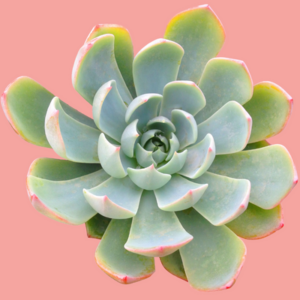The Christmas cactus, scientifically known as Schlumbergera, is a beloved houseplant known for its vibrant blooms that grace homes during the holiday season. Yet, for many plant enthusiasts, a common query arises: “Can I put my Christmas cactus outside?” The allure of transporting these beautiful plants into the great outdoors tantalizes many gardeners, especially during the warmer months. However, the decision to move your Christmas cactus outdoors comes with a range of considerations that deserve meticulous attention.
Understanding the natural habitat of the Christmas cactus can provide significant insights. Unlike traditional desert cacti, which thrive in arid environments, the Christmas cactus is native to the rainforests of Brazil. These plants are accustomed to a humid, shaded understory, where they grow on tree branches and rocks, often receiving dappled sunlight instead of direct rays. This distinct preference sets the stage for a nuanced approach to outdoor care.
When contemplating moving your Christmas cactus outside, timing is pivotal. The ideal season for relocation is late spring or early summer when the threat of frost has diminished and temperatures consistently hover above 50°F (10°C). Sudden exposure to the fluctuating temperatures might shock your plant, resulting in stress that could impede its blooming capabilities. Furthermore, acclimatizing your cactus to its new environment gradually is vital; placing it in a shaded area for a few days allows the plant to adapt without subjecting it to the harshness of full sun.
The Fascinating Transition: Acclimatization Is Key
Acclimatization involves more than mere placement; it requires a thoughtful approach to environmental changes. To avoid sunburn—a common fate for unprepared cacti—one should initially provide filtered sunlight. An ideal location may be a patio or a shaded garden area that offers protection from direct sunlight, especially during the hottest part of the day. This ensures that while the plant enjoys the outdoor ambiance, it is also shielded from potential harm.
Moreover, consider the challenges posed by precipitation. While Christmas cacti thrive in humid conditions, excessive rainfall can be detrimental. One of the leading causes of mortality in Christmas cacti is overwatering, which often results from too much exposure to rain. Utilization of raised plant stands or hanging baskets can fortify your cactus against this issue, allowing it to benefit from outdoor humidity without drowning. Remember, a delicate balance of moisture and air circulation is essential to maintain the health of your cactus.
The Apprehension of Outdoor Pests: Potential Threats Abound
Outdoor conditions are not merely a shift in environment; they introduce new variables, including pests. Aphids, spider mites, and mealybugs are frequent nuisances that might lay claim to your Christmas cactus when it’s outside. Regular inspections for these pests allow for early intervention, ensuring that your plant remains robust and thriving. Employing natural deterrents, such as neem oil or insecticidal soap, can help mitigate infestations successfully. A proactive approach is essential, not just to protect your Christmas cactus but also to safeguard other plants in your vicinity.
The Return Home: Preparing for Autumn’s Chill
As the glorious days of summer dwindle and autumn approaches, the necessity of returning your Christmas cactus indoors becomes paramount. The dropping temperatures, especially those below 50°F (10°C), are not conducive to the survival of this succulent. A well-timed retrieval in late September or early October will afford your cactus the stability it requires for continued health.
Prior to bringing it back inside, an inspection for pests should be conducted once more, ensuring no unwelcome guests accompany the plant. Additionally, it’s wise to consider the environmental conditions inside your home. A cozy, well-lit spot with indirect sunlight will mimic the natural habitat of the Christmas cactus, allowing it to flourish and prepare for its next blooming cycle. Adjusting watering schedules is also imperative; reduce the frequency as the plant enters dormancy, which typically occurs from late fall through winter.
Celebrating the Blossoms: A Rewarding Experience
Pioneering the journey of taking a Christmas cactus outdoors can yield a plethora of benefits. The fresh air, increased humidity, and gentle breezes can invigorate the plant’s growth, contributing to an exuberant display of blossoms come holiday season. Beyond the aesthetic appeal, the ritual of caring for a living plant outdoors fosters a deeper appreciation for nature and its cycles, an aspect that is genuinely fulfilling. Moreover, these experiences often cultivate a connection between the gardener and the environment, a bond that extends beyond mere plant care.
Ultimately, understanding the complexities of relocating your Christmas cactus outdoors entails careful planning and execution. From selecting the right time and environment to safeguarding against pests and environmental changes, diligent attention to detail can ensure both the health of your cactus and the delight of its blooms throughout the seasons. An adventure awaits those who embrace the challenges and rewards of this joyous botanical endeavor, intertwining nature’s rhythms with the art of gardening.





Leave a Comment